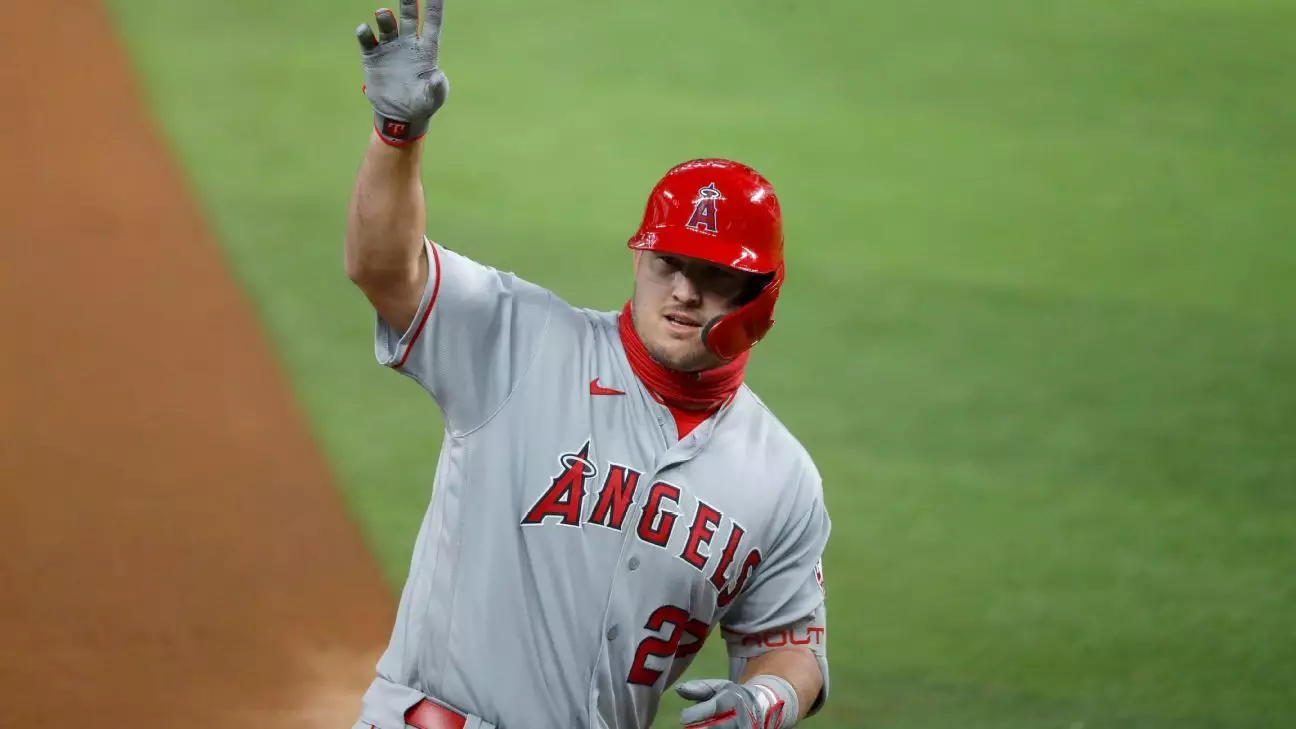In an era where athletic careers often hinge on physical resilience and adaptability, Mike Trout, a cornerstone of the Los Angeles Angels, faces a pivotal crossroads. After enduring two significant knee surgeries within a span of just a few months, Trout finds himself contemplating a future that may not include his traditional role as a center fielder. This could prompt a strategic shift not only in how he plays but also in how the Angels organize their roster for optimum performance.
Trout’s first surgery in early May focused on repairing a torn left meniscus, followed by a second operation in July, which effectively sidelined him for the remainder of the season. At just 33 years old, Trout’s recent struggles raise questions about how much he can physically endure, particularly given that his appearances have dwindled to an average of 66.5 games over the past four seasons. In a sport where stamina and agility are paramount, the prospect of transitioning roles from center field to a corner outfield position or even to designated hitter could be both a challenge and a necessity.
As Trout eyes a return to the field next season, he candidly acknowledged, “I think everything’s on the table.” His willingness to consider a transition underscores the acute awareness he has of his situation. While he views remaining active in the lineup as the overarching goal, he also indicates that any changes to his position will ultimately be guided by the Angels’ front office. This collaborative approach reflects a mature athlete who grasps the dynamics of professional sports, where long-term health can sometimes eclipse momentary glory.
Despite signing a lucrative 12-year contract extension worth $426.5 million in March 2019, Trout’s performance in recent seasons has been inconsistent, exemplified by a highest appearance count of just 119 in 2022. The stark contrast between his lofty average over his career—.299 with an OPS (on-base plus slugging) of .991—compared to his underwhelming .214 batting average as a designated hitter, showcases the complexities surrounding his potential role shifts. Determining whether it’s time to move into a corner position or embrace a DH role will undoubtedly influence both Trout’s productivity and his legacy within the game.
Throughout his career, Trout has predominantly excelled as a center fielder, accumulating significant milestones: 378 home runs and 954 RBIs across 1,518 games all played with the Angels. His impressive resume includes 11 All-Star selections and nine Silver Slugger Awards, affirming his status as one of the game’s elite. However, this is a moment that invites reflection on how he can continue to contribute effectively, irrespective of position.
Trout’s initial years in the majors saw him alternating between left and right field, where he started nearly 90 games in those positions. However, after declaring his preference for center field, he has remained fixed in that role, firmly establishing his identity as a player. Will a shift to a less demanding position enable him to extend his career? Only time will tell whether this transformation is a step towards sustaining his performance or a precursor to a decline.
As he navigates his rehabilitation, Trout expresses optimism, stating, “I feel great… it’s getting stronger every day.” Regularly integrating swinging back into his routine signifies a positive trajectory in his recovery, essential for a successful comeback. The focus on strengthening his body reinforces the idea that resilience is as vital as talent in professional sports. For fans and the Angels’ organization alike, his dedication is encouraging.
The impending offseason will likely involve extensive dialogue regarding his position and expected contributions for the 2024 season. As Trout reflects upon his career and futures options, he leaves an open-ended question in the minds of many: how will Mike Trout redefine his impact on the Angels and the game of baseball as he transitions into this new phase of his career? His willingness to embrace change may ultimately distinguish his legacy, bridging the gap between adaptation and excellence.


Leave a Reply